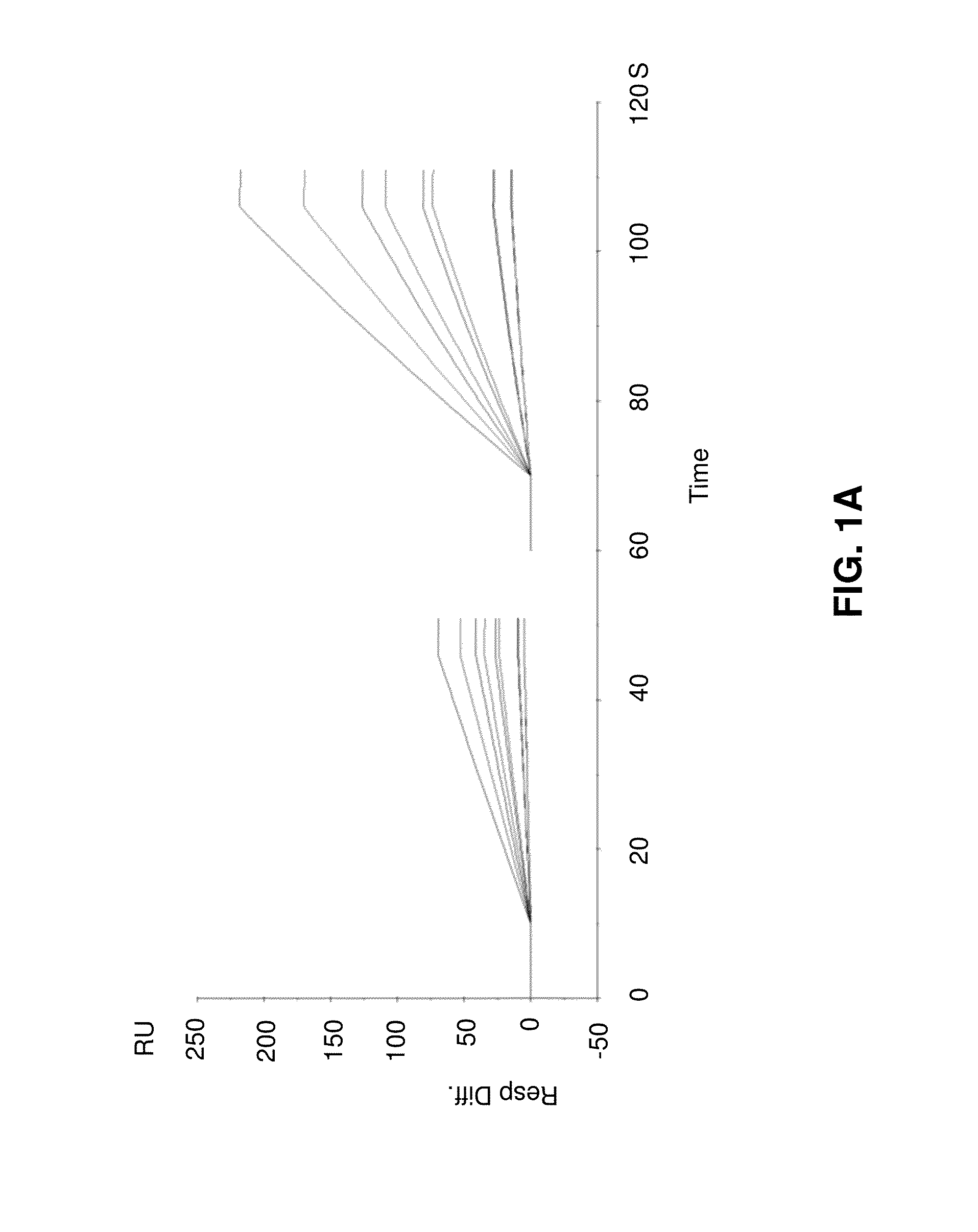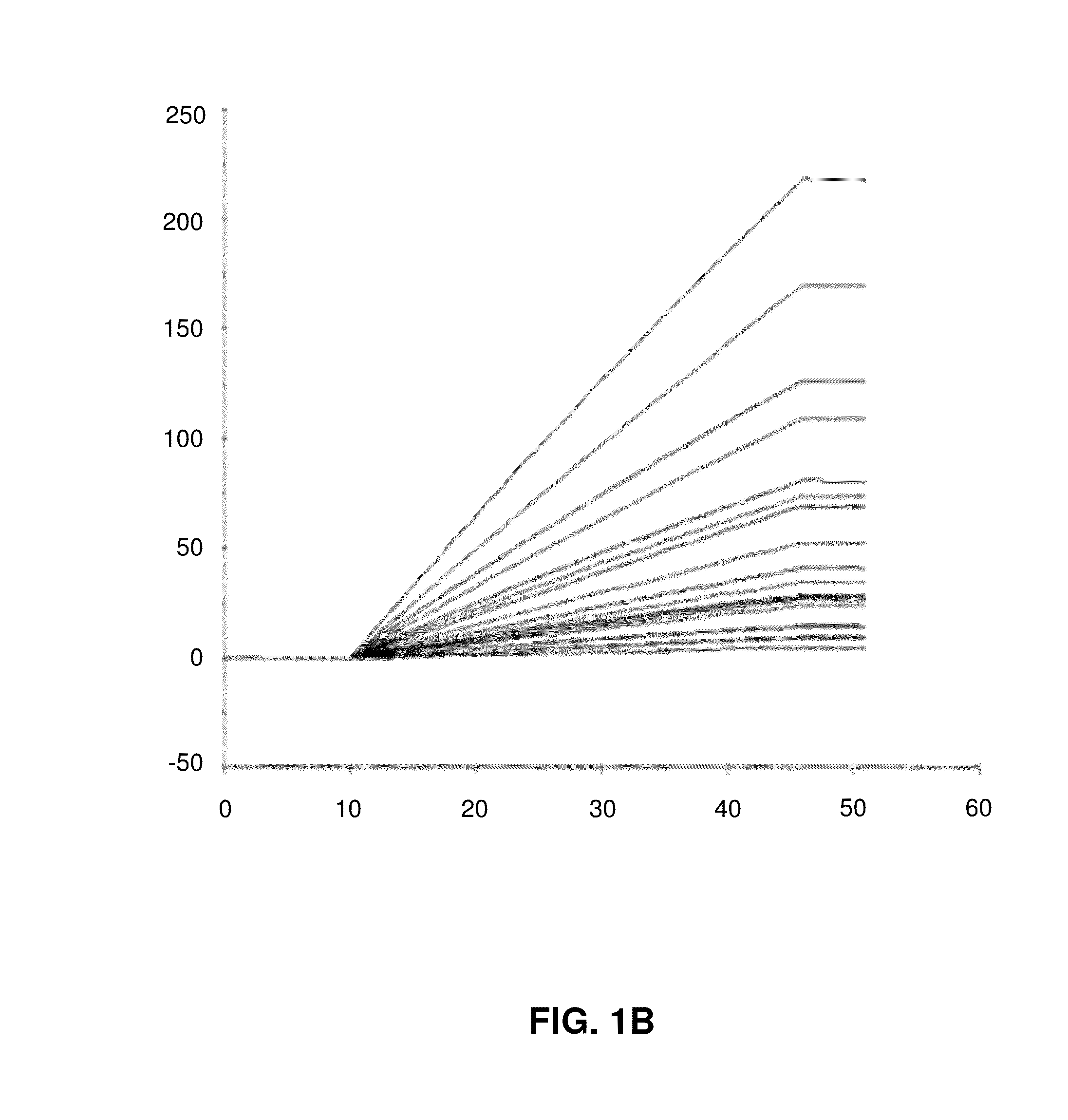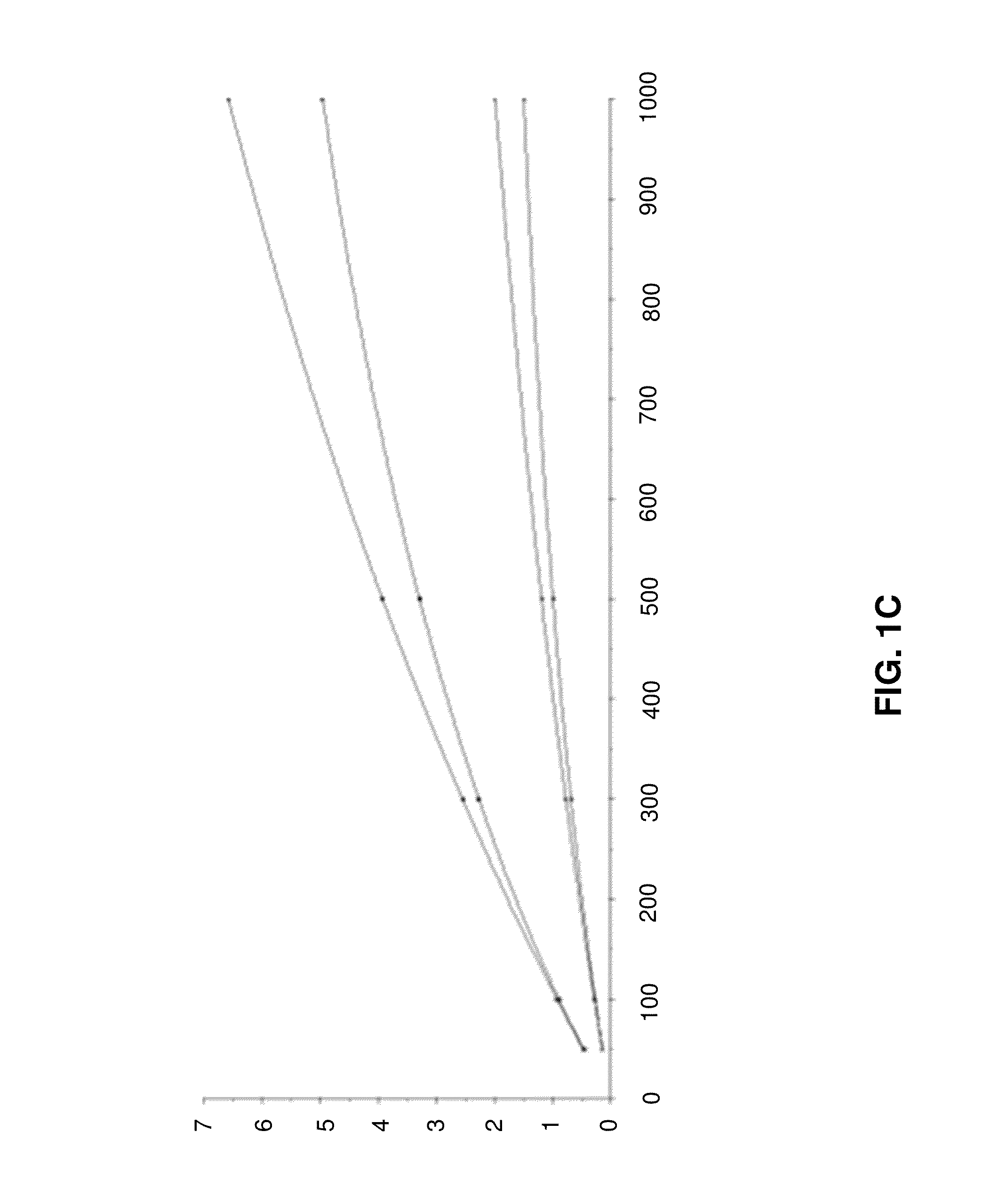Method of determining active concentration
a bioanalyte and active concentration technology, applied in the direction of instruments, scientific instruments, measurement devices, etc., can solve the problems of uncertainty in the activity of the standard, no standard is available, many established methods for measuring protein concentration do not distinguish between active and inactive molecules, etc., and achieve the effect of convenient implementation
- Summary
- Abstract
- Description
- Claims
- Application Information
AI Technical Summary
Benefits of technology
Problems solved by technology
Method used
Image
Examples
example 1
[0085]A procedure for determining active concentration by the method of the present invention using, for example, a modified Biacore® T200 system may be performed as follows:
[0086](Note that this description is focused on the CFCA experiment itself and that other assay development steps, such as selection of immobilization method, buffer conditions and regeneration conditions, have already been performed.)
1) Immobilize the ligand on discrete spots / channels on the sensor surface using a suitable immobilization technique (amine coupling, thiol coupling, biotinylation and capture on streptavidin or by immobilizing other tag or domain specific capture reagents). Note the immobilization levels.
2) Leave one spot without immobilized ligand for referencing.
3) Prepare serial dilutions (typically in steps of two to five) of the sample.
4) Use the Method Builder software to set up the assay with the following assay steps:
a) startup cycles used for conditioning of the system Startuo cycles are t...
example 2
Simulations of Initial Binding Rates
[0096]In the following, example data from simulations of initial binding rates will be described with reference to FIGS. 1A to 1D.
[0097]FIG. 1A shows overlay plots of simulated data. In the left panel, the concentration is 3 nM (dilution factor 10). Ligand levels giving rise to binding capacities of 50, 100, 300, 500 and 1000 RU, ka 1e6, kd 1e-3, kt 1e9 (red) or 2e9 (blue). In the right panel, the concentration is 10 nM (dilution factor 3). All other parameters are as in the left panel.
[0098]FIG. 1B shows a linear fit of binding data with a 3 seconds window 1 to 4 seconds into the injection.
[0099]FIG. 1C shows a global fit using a modified 4-parameter equation. Binding rates for each concentration at both flow rates are plotted versus ligand density (Rmax). Data returned by analysis: Rhi, Chî2, concentration of undiluted sample 302,62E-06 30 nM.
[0100]FIG. 1D shows binding rate ratio plotted versus ligand density (Rmax). Note that data overlap. Rh...
example 3
Analysis of Binding Data Obtained with Immobilized Anti Beta-2-Microglobulin Antibody and Beta-2-Microglobulin
[0101]In this example the antibody was immobilized at eight different binding levels (ranging from 435 to 13300 RU), and one concentration of beta-2-micro-globulin was injected at a flow rate of 5 μl / min. The binding data and a linear fit to data over a 5 s window are demonstrated in FIG. 2.
[0102]The initial binding rates (dR / dt) were plotted versus immobilization level (1 mm) and a fit of the data using equation (15) is illustrated in FIG. 3.
[0103]The concentration of beta 2 microglobulin was determined by dividing Rhi (in this case 4.81 RU / s with the relevant kt value 4, 9e8 RU / (M*s) giving an active concentration of 9.9 nM.
[0104]Data obtained at immobilization levels 4200 and 10400 RU were analysed at two flow rates as illustrated in FIG. 4. In this experiment the flow rate was initially five μl / min, and 15 seconds into the injection it is changed to 100 μl / min. An offset...
PUM
| Property | Measurement | Unit |
|---|---|---|
| flow rate | aaaaa | aaaaa |
| flow rate | aaaaa | aaaaa |
| flow rate | aaaaa | aaaaa |
Abstract
Description
Claims
Application Information
 Login to View More
Login to View More - R&D
- Intellectual Property
- Life Sciences
- Materials
- Tech Scout
- Unparalleled Data Quality
- Higher Quality Content
- 60% Fewer Hallucinations
Browse by: Latest US Patents, China's latest patents, Technical Efficacy Thesaurus, Application Domain, Technology Topic, Popular Technical Reports.
© 2025 PatSnap. All rights reserved.Legal|Privacy policy|Modern Slavery Act Transparency Statement|Sitemap|About US| Contact US: help@patsnap.com



